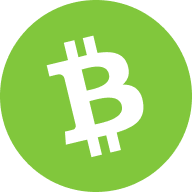Why Tokens Are the New Infrastructure: Unlocking Payday Potential in Crypto
Introduction: Tokens as Infrastructure in the Crypto Ecosystem
Tokens have transcended their origins as speculative assets to become foundational infrastructure within the blockchain ecosystem. This paradigm shift is redefining how projects approach tokenomics, regulatory compliance, and market strategies. In this article, we’ll explore the evolving role of tokens, their impact on market stability, and how utility-driven designs can unlock payday potential for crypto projects.
Tokenomics and Market Stability: Building a Strong Foundation
The Importance of Thoughtful Tokenomics
Thoughtful tokenomics is the cornerstone of a successful blockchain project. Premature token launches often result in flawed tokenomics, market instability, and increased regulatory scrutiny under frameworks like the Howey Test. To avoid these pitfalls, projects must:
Align tokenomics with real-world utility and product development.
Prioritize long-term sustainability over short-term gains.
Stress-Testing Token Models
Stress-testing token models against market volatility is essential for identifying weaknesses. This process involves:
Conducting simulations to evaluate token performance under various market conditions.
Seeking feedback from experienced blockchain developers and economists.
By rigorously testing token models, projects can ensure their designs are robust and capable of withstanding market fluctuations.
Token Unlock Schedules and Price Volatility
Token unlock schedules can significantly impact price stability. For instance, Sui’s $300M token unlock caused notable price volatility, with studies showing that 90% of unlocks negatively affect token prices. To mitigate these risks, projects should:
Implement gradual unlock schedules.
Consider hard-capped token supplies, as seen with Midnight Network’s NIGHT tokens.
These strategies help maintain market stability and foster investor confidence.
Regulatory Scrutiny and the Howey Test: Navigating Compliance
Utility vs. Speculation
Regulators are more likely to classify tokens as utilities rather than securities when they are deeply integrated into a product’s functionality. To reduce regulatory risks, projects should:
Design tokens with clear, practical use cases within their ecosystems.
Avoid speculative token launches that lack real-world utility.
The Impact of Regulatory Changes
The regulatory landscape is constantly evolving. For example, the potential exit of figures like Gary Gensler could create a more favorable environment for utility-driven tokens. However, projects must remain proactive by:
Monitoring regulatory developments.
Adapting their strategies to comply with new guidelines.
Utility-Driven Token Design: Unlocking Payday Potential
Aligning Tokens with Ecosystem Needs
Tokens should only be launched if they are integral to the ecosystem. For projects where tokens are not essential, alternative funding methods like equity are recommended. This ensures that:
Tokens serve a meaningful purpose.
The project’s long-term success is prioritized over short-term token sales.
Privacy and Scalability in Blockchain Networks
Midnight Network, a project tied to Cardano, exemplifies utility-driven token design. By leveraging ZK-SNARKs for privacy and scalability, Midnight bridges private and public ledgers, offering a comprehensive blockchain solution. This approach enhances the utility of its NIGHT tokens and positions the project as a leader in privacy-focused blockchain solutions.
Cross-Chain Functionality and Atomic Swaps
Midnight also emphasizes cross-chain functionality and atomic swaps, enabling seamless interactions between different blockchain networks. These features:
Enhance the utility of NIGHT tokens.
Strengthen the project’s position in the blockchain ecosystem.
Alternative Funding Methods for Crypto Projects
Equity vs. Token Launches
For smaller projects or those with limited resources, equity-based funding can be a viable alternative to token launches. This approach:
Reduces regulatory risks.
Allows projects to focus on product development before introducing tokens.
Leveraging Community Support
Community-driven funding methods, such as crowdfunding or grants, can also help smaller projects adopt utility-driven tokenomics without compromising financial stability. These methods:
Foster community engagement.
Provide a stable foundation for future token launches.
Challenges Faced by Specific Tokens: Lessons from Bitcoin Cash
Declining Whale Activity and On-Chain Demand
Bitcoin Cash (BCH) has faced challenges such as:
Reduced whale activity.
Declining transaction sizes.
The exit of Tether’s liquidity.
These factors have impacted its on-chain demand, highlighting the importance of maintaining robust tokenomics.
Learning from Market Dynamics
Projects can learn from Bitcoin Cash’s challenges by:
Prioritizing utility-driven token designs.
Ensuring tokens remain integral to their ecosystems.
This approach can help mitigate risks and enhance long-term viability.
Conclusion: The Future of Tokens as Infrastructure
Tokens are evolving from speculative instruments to foundational infrastructure within the crypto ecosystem. By prioritizing thoughtful tokenomics, utility-driven designs, and compliance with regulatory frameworks, projects can unlock payday potential while contributing to the growth and stability of the blockchain industry. As the market matures, the focus on utility and integration will continue to shape the future of tokens and their role in the digital economy.
© 2025 OKX. Este artículo puede reproducirse o distribuirse en su totalidad, o pueden utilizarse fragmentos de 100 palabras o menos de este artículo, siempre que dicho uso no sea comercial. Cualquier reproducción o distribución del artículo completo debe indicar también claramente lo siguiente: "Este artículo es © 2025 OKX y se utiliza con permiso". Los fragmentos permitidos deben citar el nombre del artículo e incluir su atribución, por ejemplo "Nombre del artículo, [nombre del autor, en su caso], © 2025 OKX". Algunos contenidos pueden generarse o ayudarse a partir de herramientas de inteligencia artificial (IA). No se permiten obras derivadas ni otros usos de este artículo.


